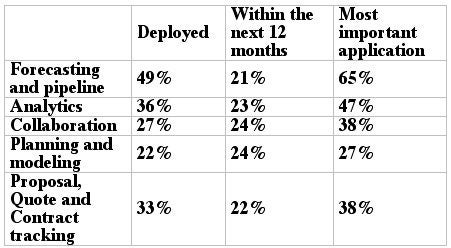Container technologies, like the white-hot Docker platform, are quickly becoming the norm among enterprise IT environments according to a new study by the Web server and application specialists at NGINX.
In the short three years since its release, Docker has taken IT departments and the developer community by storm. The lightweight app containerization technology has also spurred interest in competing container platforms like Rocket and LXD.
In a survey of over 1,800 CIOs, CTOs, DevOps professionals and other IT experts, NGINX discovered that two-thirds of organizations are either investigating the use of containers (29 percent), using them in their development efforts (17 percent) or have already embraced them for production workloads (20 percent). Among those using containers in production, a third said they were running more than 80 percent of their workloads on containers.
For some organizations, containers have already proven their mettle and earned a place in their critical app delivery arsenals. “Perhaps more tellingly, half of those running containers are using them for mission-critical applications, meaning more organizations are putting their full trust in container technology,” stated the report.
Respondents who are running containers singled out rapid deployment as the top benefit provided by the tech. Scalability followed closely behind.
Microservices — essentially breaking down complex applications into smaller components for different development teams, a prime container use case — are also gaining ground. NGINX discovered the 68 percent of organizations are using or investigating the use of microservices.

Nearly a third (29 percent) of those polled said they are currently using microservices in production while 15 percent said they used microservices to develop applications. Nearly a quarter (24 percent) said they were evaluating microservices.
In terms of microservices adoption, large enterprises are lagging behind small and midsized companies. Microservices are in use by 50 percent of midsized companies and 44 percent of small companies, according to the survey. Among large businesses, the figure drops to 36 percent. “[Thirty-eight percent] of large companies said they aren’t using microservices at all, and 26 percent are researching them, but have not yet begun to implement them,” stated the report.
Meanwhile, cloud computing has already settled comfortably into the technology mainstream. Eighty-six percent organizations are using the public cloud.
Among public cloud providers, Amazon Web Services (AWS) dominates (49 percent), followed by Google Cloud Platform (14 percent) and Microsoft Azure (8 percent). Amazon has won over large and midsized companies, with three-quarters of respondents rating AWS as the best cloud service.
Pedro Hernandez is a contributing editor at Datamation. Follow him on Twitter @ecoINSITE.
Photo courtesy of Shutterstock.
Huawei’s AI Update: Things Are Moving Faster Than We Think
FEATURE | By Rob Enderle,
December 04, 2020
Keeping Machine Learning Algorithms Honest in the ‘Ethics-First’ Era
ARTIFICIAL INTELLIGENCE | By Guest Author,
November 18, 2020
Key Trends in Chatbots and RPA
FEATURE | By Guest Author,
November 10, 2020
FEATURE | By Samuel Greengard,
November 05, 2020
ARTIFICIAL INTELLIGENCE | By Guest Author,
November 02, 2020
How Intel’s Work With Autonomous Cars Could Redefine General Purpose AI
ARTIFICIAL INTELLIGENCE | By Rob Enderle,
October 29, 2020
Dell Technologies World: Weaving Together Human And Machine Interaction For AI And Robotics
ARTIFICIAL INTELLIGENCE | By Rob Enderle,
October 23, 2020
The Super Moderator, or How IBM Project Debater Could Save Social Media
FEATURE | By Rob Enderle,
October 16, 2020
FEATURE | By Cynthia Harvey,
October 07, 2020
ARTIFICIAL INTELLIGENCE | By Guest Author,
October 05, 2020
CIOs Discuss the Promise of AI and Data Science
FEATURE | By Guest Author,
September 25, 2020
Microsoft Is Building An AI Product That Could Predict The Future
FEATURE | By Rob Enderle,
September 25, 2020
Top 10 Machine Learning Companies 2020
FEATURE | By Cynthia Harvey,
September 22, 2020
NVIDIA and ARM: Massively Changing The AI Landscape
ARTIFICIAL INTELLIGENCE | By Rob Enderle,
September 18, 2020
Continuous Intelligence: Expert Discussion [Video and Podcast]
ARTIFICIAL INTELLIGENCE | By James Maguire,
September 14, 2020
Artificial Intelligence: Governance and Ethics [Video]
ARTIFICIAL INTELLIGENCE | By James Maguire,
September 13, 2020
IBM Watson At The US Open: Showcasing The Power Of A Mature Enterprise-Class AI
FEATURE | By Rob Enderle,
September 11, 2020
Artificial Intelligence: Perception vs. Reality
FEATURE | By James Maguire,
September 09, 2020
Anticipating The Coming Wave Of AI Enhanced PCs
FEATURE | By Rob Enderle,
September 05, 2020
The Critical Nature Of IBM’s NLP (Natural Language Processing) Effort
ARTIFICIAL INTELLIGENCE | By Rob Enderle,
August 14, 2020

Datamation is the leading industry resource for B2B data professionals and technology buyers. Datamation's focus is on providing insight into the latest trends and innovation in AI, data security, big data, and more, along with in-depth product recommendations and comparisons. More than 1.7M users gain insight and guidance from Datamation every year.
Advertise with TechnologyAdvice on Datamation and our other data and technology-focused platforms.
Advertise with Us
Property of TechnologyAdvice.
© 2025 TechnologyAdvice. All Rights Reserved
Advertiser Disclosure: Some of the products that appear on this
site are from companies from which TechnologyAdvice receives
compensation. This compensation may impact how and where products
appear on this site including, for example, the order in which
they appear. TechnologyAdvice does not include all companies
or all types of products available in the marketplace.